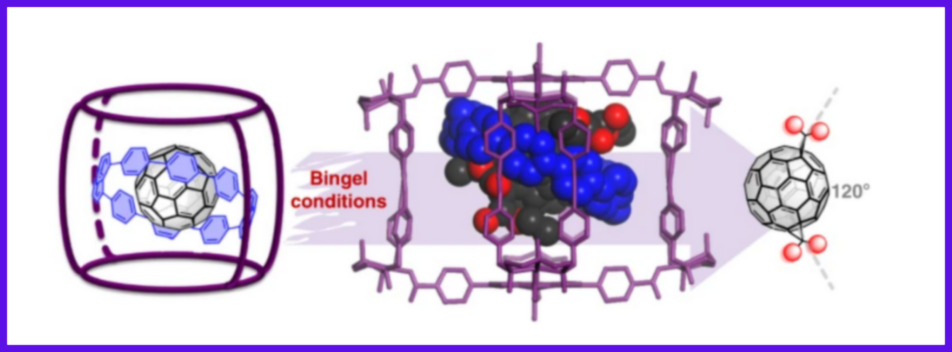Cerdanyola del Vallès, 12th May 2021. Researchers from QBIS-CAT group from the Universitat de Girona, the Catalan Institute of Nanoscience and Nanotechnology (ICN2) and the Institute of Organic Chemistry I from Ulm University have developed, with the support of the ALBA Synchrotron, a new methodology for synthesizing fullerenes.
Fullerenes are unique chemical species. Their structure is that of a soccer ball with carbon atoms at the vertices of the ball. Organic solar cells of the latest generation use specifically functionalised forms trapped in nanocages of these molecular soccer balls as transporters of charge. "Until now, the production of precisely functionalised fullerenes has been very difficult due to the formation of a large number of unwanted by-products. The target molecules therefore have to be painstakingly purified, which is an impediment for their widespread application”, explains Max von Delius, head of the Institute of Organic Chemistry I at Ulm University.
The international research team led by Professor Xavi Ribas from the University of Girona and Professor Max von Delius has developed a highly selective method for functionalising the fullerene C60 in trans-3 bisadduct, that achieves a yield of over 90%. Besides the process does not require any complex purification steps. The three-shell nanoreactor, which is reminiscent of a 'matryoshka' doll, has been published in the journal Nature Chemistry.
A key experiment in this work is solving the structure, which was performed at the XALOC beamline of the ALBA Synchrotron, using X-ray diffraction. This beamline, devoted to macromolecular crystallography, provides structural details of biological molecules, but it can also be very useful resolving crystalline structures with similar dimensions to macromolecules. As it happens in biological molecules, the position of the atoms in these nanocages was clearly located from the electron density maps. A high electron density was also found inside the cages, which allowed the assignment of various atomic positions belonging to the molecules C60 (internal structure level) and [10] CCP (medium structure level).

The first figure shows a molecular matryoshka used for the functionalisation of the fullerene C60. The multi-shell reactor is based on three nested molecular structures that resemble a soccer ball (fullerene molecule, inside), a hula hoop and a cage.
Link to the original news: https://www.uni-ulm.de/en/university-news/news-details/article/molekulare-matrjoschka-loest-chemisches-problemdreischaliger-nano-reaktor-zur-funktionalisierung-von-fulleren-1/




